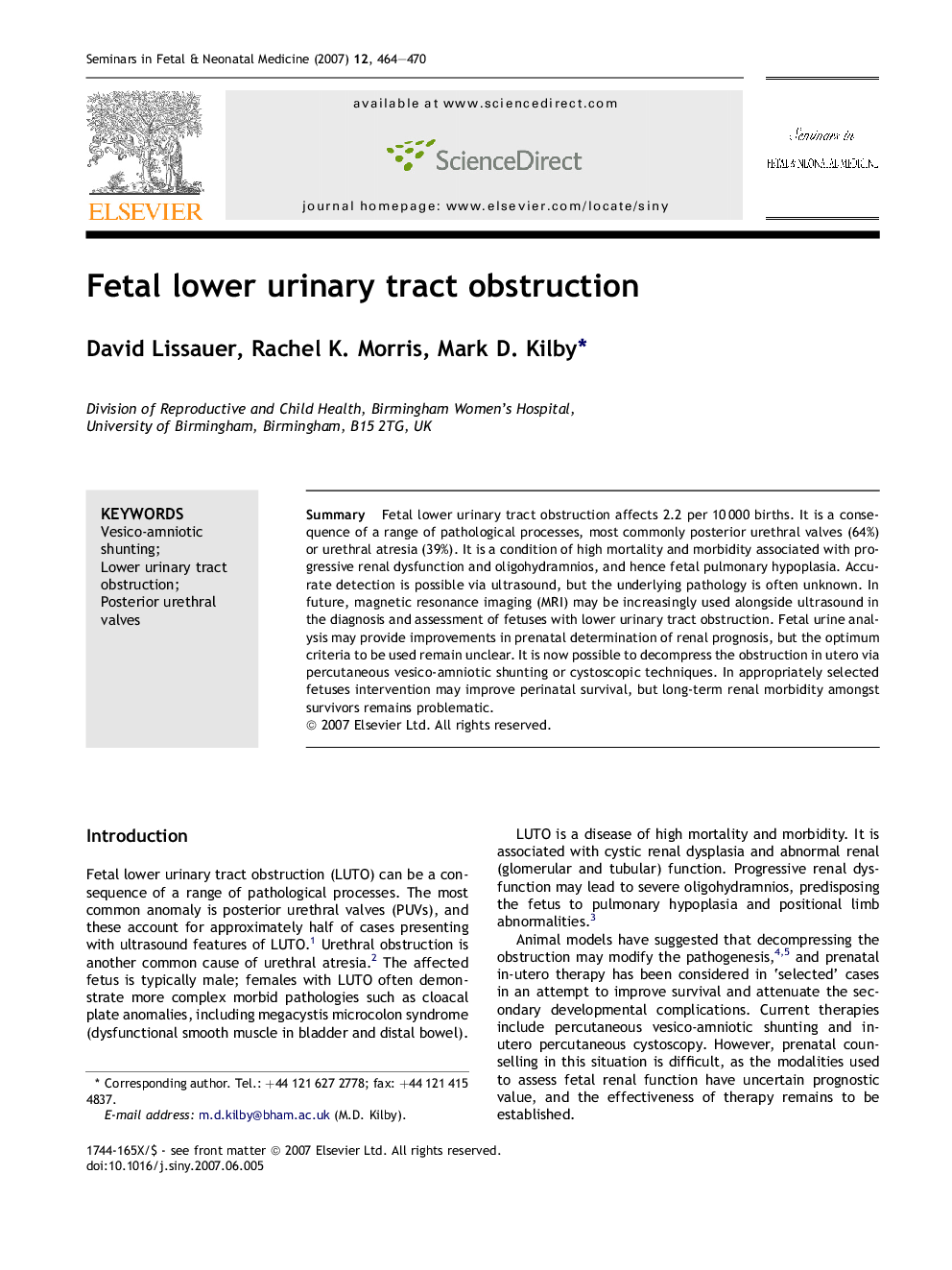| Article ID | Journal | Published Year | Pages | File Type |
|---|---|---|---|---|
| 3974730 | Seminars in Fetal and Neonatal Medicine | 2007 | 7 Pages |
SummaryFetal lower urinary tract obstruction affects 2.2 per 10 000 births. It is a consequence of a range of pathological processes, most commonly posterior urethral valves (64%) or urethral atresia (39%). It is a condition of high mortality and morbidity associated with progressive renal dysfunction and oligohydramnios, and hence fetal pulmonary hypoplasia. Accurate detection is possible via ultrasound, but the underlying pathology is often unknown. In future, magnetic resonance imaging (MRI) may be increasingly used alongside ultrasound in the diagnosis and assessment of fetuses with lower urinary tract obstruction. Fetal urine analysis may provide improvements in prenatal determination of renal prognosis, but the optimum criteria to be used remain unclear. It is now possible to decompress the obstruction in utero via percutaneous vesico-amniotic shunting or cystoscopic techniques. In appropriately selected fetuses intervention may improve perinatal survival, but long-term renal morbidity amongst survivors remains problematic.
